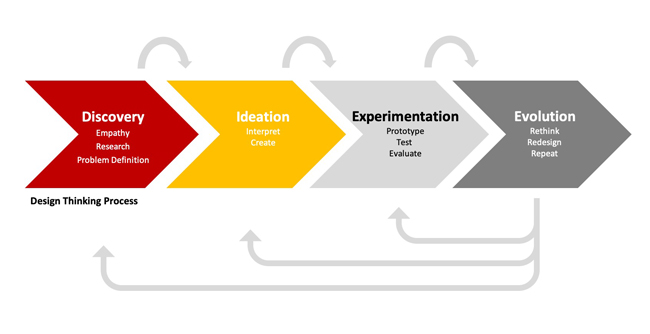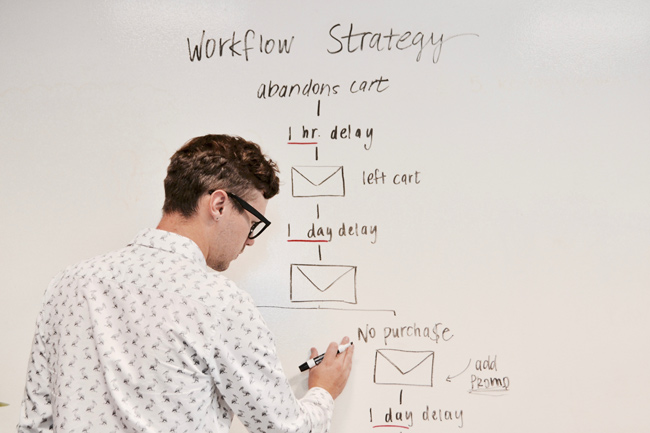It’s a regular day and you’re checking off your to-do list: drafting emails for a welcome sequence, going through analytics from a recent email campaign, and more.
As you’re about to start your next task, you hear the notification bell on your phone.
Curious, you check it out and see an email from your favorite newsletter—and there’s an intriguing subject line that has you itching to read it.
Without hesitation, you click on the email and spend the next five minutes laughing and enjoying its contents. Once you’re done, you can’t help but share it with your close friends to brighten their day.
As you get back to work, you find yourself eagerly anticipating the next newsletter.
A brand that sends such engaging emails earns the attention, trust, and loyalty of its email subscribers.
They accomplish this by implementing effective email nurturing strategies, which we are going to discuss today. We’ll also cover:
- How to leverage the power of crafty and intriguing subject lines to increase open rates
- The best practices for email nurturing that increase brand awareness
- How to implement design thinking principles into your email nurturing strategy to foster customer loyalty
Without further ado, let’s dive straight into how you can cultivate strong customer relationships through email nurturing.
1 – Leveraging the Power of Email Nurturing to Cultivate Strong Customer Relationships
Nurturing an email list is a delicate art that involves building and maintaining relationships with subscribers over time through a series of strategic and personalized email communications. We do so with the following overarching goals in mind:
- Engaging and interacting with subscribers
- Providing them with valuable content
- Moving them closer to becoming loyal customers
At OnDigitalMarketing, we understand the importance of customer engagement in digital marketing. That’s why we advocate for implementing design thinking strategies in email nurturing.

Design thinking is a problem-solving approach that emphasizes empathy, experimentation, and iteration to create innovative solutions. When applied to marketing, it helps businesses better understand their customers, uncover valuable insights, and develop effective strategies.
By delivering personalized and valuable content through email, businesses can create customized user experiences that boost engagement and open rates.
To illustrate, let’s imagine a scenario featuring an online fitness program that offers workout programs, nutrition guides, and motivational content.
Your goal is to nurture its email list by providing valuable and engaging content that resonates with subscribers and encourages them to maintain an active and healthy lifestyle.
Here’s a step-by-step guide to how you can use design thinking to build a stronger customer relationship with your email list:
- Understand your customer: Start by gaining a deep understanding of your email subscribers through surveys, interviews, or by engaging with them on social media to gather insights into their fitness goals, challenges, and interests.
For example, you may discover that many of your subscribers struggle with finding motivation to exercise regularly due to a busy schedule or a lack of variety in their workouts.
To address this, empathize with them through an email sequence that provides actionable advice to keep their motivation levels up. - Identify their needs and generate ideas: Jot down your subscribers’ needs, goals and pain points using your user persona template.
This step allows you to brainstorm creative ideas that will provide value and engage your customers. Think outside the box and suggest innovative and creative ways to address their needs.
For instance, a “Fitness Adventure Challenge” email series. Each email presents a new virtual fitness adventure where subscribers can unlock achievements and earn rewards by completing specific workouts or challenges. - Design a prototype, test it, and collect feedback: Create a prototype of your email nurturing strategy by designing a sample email series for the “Fitness Adventure Challenge.”
We recommend using visual elements, storytelling techniques, and interactive features to make it engaging and immersive. Test it with a small group of subscribers to gather feedback and refine your approach.
Subscribers may provide positive feedback, expressing excitement about the interactive features, motivation from the virtual rewards, and enjoyment of the variety in the workouts.
However, some may suggest adding nutritional tips or a community aspect to enhance the experience further. - Implement and scale: Based on the feedback received and improvements suggested, launch the full “Fitness Adventure Challenge” email series to your entire email list.
Monitor engagement metrics such as open rates, click-through rates, and subscriber responses to assess the impact of your nurturing strategy. Continuously iterate and refine the series based on ongoing feedback and analytics.
Statistics: By implementing the strategies contained in our worksheets and textbook, we’ve helped over 54 companies generate revenue totaling $350 million.
We’ve successfully presented these tactics at three undergraduate universities, following an in-depth and intense peer review process.
By leveraging the expertise of OnDigitalMarketing, businesses can elevate their email nurturing efforts to new heights.
Watch the video below to learn more about why email personalization is important.
2 – Crafting Effective Email Nurture Campaigns Through Personalization
Building meaningful relationships with your customers takes time and effort.
The nature of email nurturing allows you to maintain regular and consistent communication with your customers.
By staying in touch and consistently providing valuable content, updates, and offers, you create opportunities to engage and build a connection with your audience over time.
Consistency is key.
It builds trust and keeps your brand top of mind for your customers.
Let’s explore how you can leverage personalization to create effective email nurture campaigns that engage your prospects and customers and ultimately drive better results:
Personalize Your Content
“A person’s name is to him or her the sweetest and most important sound in any language.”
—Dale Carnegie.
Think about it.
How does it feel to hear someone say your name?
Absolutely fantastic.
So, instead of sending generic emails that greet your customers with a dreadfully boring opening such as “Dear customer” or even worse “Dear (company name) subscriber,” leverage personalization to make your emails feel tailored to each recipient.
Say you run an online bookstore, and a customer named Emily has shown interest in mystery novels and historical fiction.
To make the book recommendation sound like it’s coming from an old book-loving friend, consider addressing her by name and recommending new releases in those genres or offering exclusive discounts on similar books based on her past purchases.
It might go a little bit like this: “How’s it going, Emily? Discover Thrilling Mysteries and Engaging Historical Fiction Just for You.”
Write Engaging Email Copy
Engaging email copy is essential for capturing the attention and interest of your audience.
It involves writing email content that speaks directly to your recipients, maintaining a conversational tone, and delivering value-driven information by leveraging the power of user personas.
Going back to our online bookstore example, we would recommend writing copy that adopts a conversational tone and addresses the recipient as a fellow mystery enthusiast.
Copy written in such a manner creates a sense of excitement and anticipation, highlighting the captivating nature of your bookstore’s collection.
We would also advise you to make the copy emphasize the value-driven aspects of your bookstore by showcasing a diverse range of mystery genres in the email’s visuals and mentioning an exclusive discount as a special perk for being part of the community.
Additionally, use storytelling techniques in your copy to evoke emotions and engage the reader’s imagination.
For instance, phrases such as “Step into the shadows,” “Enigmatic characters,” and “Heart-pounding suspense” create vivid imagery and build anticipation for the reading experience.
Write Compelling Subject Lines
Did you know that emails with compelling and personalized subject lines generate a 50% higher open rate?
To illustrate, let’s consider the subject lines of Morning Brew, a newsletter with a 4 million plus subscriber base and an open rate of 50%—way above the industry standards.
Morning Brew follows a meticulous approach when it comes to choosing email subject lines. First of all, they often use subject lines with fewer than five words that are super creative and curiosity-provoking.
They have one or two writers on their team come up with four intriguing subject lines based on the content of the newsletter. They then conduct A/B testing on the different subject line suggestions.
Instead of sending the newsletter to their 4 million readers at once, they first segment their audience into four smaller batches of 80,000 readers. During this process, they assign different subject lines to each batch.
After the newsletter is sent, Morning Brew relies on analytics to evaluate the performance of each subject line to identify the one that generated the highest open rate.
They subsequently send this winning subject line to the remaining subscribers, increasing the likelihood of higher open rates.
This approach allows them to fine-tune their email marketing strategy, improve engagement and relationship building, and deliver content that is captivating and relevant to their readers.
Expert Tip: Use personalized emails to create a customized user experience and increase email engagement and open rates in email nurturing campaigns.
The table below provides an overview of the demographic data of customers, including their age, gender, location, education level, employment status, and income bracket.
| Customer ID | Age | Gender | Location | Education Level | Employment Status | Income Bracket |
| 001 | 35 | Male | New York City | Bachelor’s | Employed | $60,000–$80,000 |
| 002 | 42 | Female | Los Angeles | Master’s | Self-employed | $100,000+ |
| 003 | 28 | Male | Chicago | High school | Unemployed | $20,000–$40,000 |
| 004 | 56 | Female | Houston | Doctorate | Employed | $80,000–$100,000 |
| 005 | 39 | Male | Miami | Associate’s | Employed | $40,000–$60,000 |
By understanding these segments, businesses can tailor their email nurturing strategies to target specific customer groups effectively.
This information can help businesses personalize their email content, promotions, and recommendations to resonate with their customers and drive engagement and conversions.
3 – Best Practices for Email Nurturing to Enhance Brand Awareness

Email nurturing isn’t just about promoting your products or services.
It goes beyond promotional content and plays a crucial role in shaping brand awareness. It involves cultivating a strong brand image and building lasting relationships with your customers.
“The most important thing to remember is you must know your audience.”
—Lewis Howes
Every email you send provides an opportunity to showcase your brand’s values, personality, and unique selling points.
By consistently aligning your email content with your brand identity, you reinforce the desired perception in the minds of your subscribers.
It’s also about cultivating a strong brand image and building lasting relationships with your customers.
Here are some best practices for email nurturing that can help your business enhance its brand awareness:
- Segmenting and personalizing emails: By segmenting your email list and personalizing your messages based on customer preferences and behaviors, you deliver targeted and relevant content to each subscriber, increasing engagement and brand loyalty.
For instance, let’s revisit the online fitness program example. You can segment your email list into categories such as beginner, intermediate, and advanced levels and send workout recommendations and tips tailored to each subscriber’s fitness level. - Easy opt-in and opt-out process: Making it easy for your customers to opt-in or opt-out of your email communications is crucial for building relationships and maintaining trust.
By giving clear instructions and ensuring a user-friendly process, you demonstrate transparency and respect for your subscribers’ preferences. - Consistent voice and tone: Using a consistent voice and tone in your emails that reflect your brand personality helps customers recognize and connect with your business. It builds familiarity and trust, contributing to enhanced brand awareness.
For example, if you’re a marketer for a quirky and playful fashion brand, opt for a lively and light-hearted tone. Fill your copy with humor, creative language, and witty subject lines that resonate with your target audience.
OnDigitalMarketing has a comprehensive, evidence-based collection of worksheets and a textbook that is built around design thinking fundamentals to equip you with the only digital marketing education you will ever need to succeed.
This guide will help you gain industry insights across various marketing channels and topics, including:
- Search engine optimization
- Social media
- Digital strategy
- Analytics and data visualization
The table below displays key performance indicators (KPIs) for email marketing campaigns, including open rates, click-through rates, conversion rates, and unsubscribe rates.
These are crucial metrics for monitoring and optimizing the effectiveness of your email nurturing efforts and enhancing customer engagement.
| Metric | Definition |
| Open rate | The percentage of recipients who opened the email |
| Click-through rate | The percentage of recipients who clicked on a link or call-to-action within the email |
| Conversion rate | The percentage of recipients who completed a desired action, such as making a purchase or filling out a form |
| Unsubscribe rate | The percentage of recipients who unsubscribed from your email list after receiving an email |
By monitoring and optimizing these metrics on an ongoing basis, you can improve the effectiveness of your email nurturing efforts, enhance your brand awareness, and increase customer engagement and loyalty.
Become Your Customers’ Digital Best Friend
Well, that’s a wrap on how to nurture your email list to build stronger relationships with your customers.
Remember, email nurturing is a powerful strategy for lead capture and relationship building in digital marketing. It allows your brands to engage with customers on a personal level, leading to enhanced customer experience and brand awareness.
Implementing design thinking principles to personalize email copy, subject lines, and user experience brings you one step closer to cultivating stronger customer relationships.
OnDigitalMarketing is a digital marketing education company whose teachings have been curated by digital marketing and eCommerce experts and used by 1,324 students in 212 countries.
Guarantee: Everything we teach undergoes in-depth and intense peer review from third-party industry experts to ensure that our services are top-tier.
To receive access to exclusive content, deals with partner websites, upcoming courses, and insider tips, be sure to sign up for our email newsletter so that we can help you launch a successful career in marketing.

